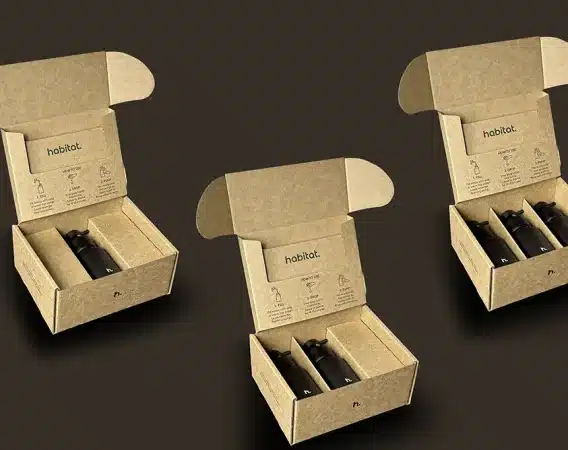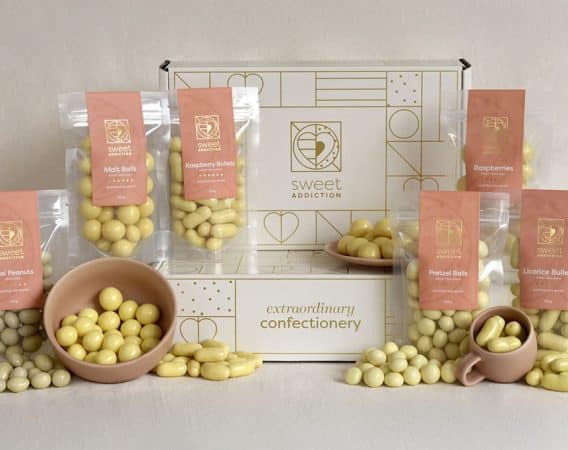In today’s environmentally conscious market, sustainable packaging has transitioned from a trend to a necessity. Brands aiming for longevity and positive brand perception must prioritise eco-friendly solutions.
With increasing consumer awareness and market-wide demand for sustainability, companies that adopt innovative packaging solutions stand to gain a competitive edge over their competitors.
Sustainable packaging is designed to minimise environmental impact and reduce waste. It encompasses materials that are renewable, recyclable, and biodegradable. By utilising sustainable packaging, brands can significantly lessen their carbon footprint, conserve resources and enhance their market appeal.
PPI has helped many sustainable businesses ace their eco-friendly packaging. We have created a range of sustainable packaging products for them. from sustainable food packaging to sustainable ecommerce packaging – our experience is spread far and wide.
Below is a guide curated by our experts for businesses, who’d like to reap the maximum benefits and efficiencies from their eco-friendly packaging while being conscious about it.
Selecting the Right Materials
One of the key steps in achieving sustainable packaging that serves your product and the planet is selecting the right materials.
Brands should look for renewable resources like bamboo, recycled paper or plant-based plastics. Many businesses are also embracing locally sourced materials to reduce transportation emissions.
Utilising materials that are certified by organisations like the Forest Stewardship Council (FSC) can also bolster a brand’s sustainability credentials.
Innovating with Design
The packaging design plays a critical role in optimising its sustainability. Efficient designs reduce material usage while still ensuring product protection. For instance, using smaller, lightweight boxes can significantly decrease material usage which also reduces waste.
Innovative designs can also incorporate features such as built-in handles or easy-opening mechanisms, enhancing user experience and sturdiness of the packaging while promoting eco-friendliness.

Sustainable Food Packaging
Sustainable packaging for food and drinks has been contested many times. Critics have questioned whether they are successful in maintaining the integrity of edible items. However, within the food industry competition is fast growing to win the sustainability race.
Sustainable food packaging is essential in reducing the environmental impact. The approach, however, which is free of any risks to the product points us toward reusable and recyclable packaging.
Reusable packaging solutions encourage consumers to return containers for refill or recycling. This approach not only minimises waste but also fosters community behaviour around sustainability.
Focus on Protective Packaging
Ensuring protection while opting for sustainable packaging is important, not only to avoid product damage but also to limit the waste produced from damaged products.
Biodegradable bubble wraps or recycled paper padding are some available options we can use to ensure the products are safe and protected during delivery. These materials provide the necessary cushioning to guard the products while being kinder to the planet.
Another innovative approach involves using corrugated cardboard that is designed to absorb shocks, thereby offering optimal protection without excessive material use.
Sustainable Ecommerce Packaging
With the sharp and rapid increase in online shopping, sustainable ecommerce packaging has become increasingly important. Many brands have already taken the necessary steps to optimise their packaging for online sales, by using materials that are both protective and conscious.
It’s notable that beyond choosing recycled materials, businesses can make a significant impact by adopting the “right-size” packaging approach. Packaging that’s tailored-made for individual products, lowers the excess material wastage.
Educating Consumers
Sustainable brands must also focus on educating consumers about the importance of eco-friendly packaging. Clear labeling and messaging can help consumers understand the environmental benefits of sustainable consumption choices.
When brands highlight their use of recycled materials or the biodegradability of their packaging, it increases consumers’ awareness and affinity to the brand.
Engaging storytelling can also enhance consumer awareness. Such as sharing the journey of the packaging creation—from material sourcing to end-of-life disposal. This can create a strong connection between the brand and its customers.
Leveraging Technology
Advancements in technology present a wealth of opportunities for sustainable packaging.
Investing in smart packaging solutions that track product freshness or monitor environmental conditions during shipping can enhance product safety but also reduce waste by making sure the products are delivered in optimal condition.
Augmented reality (AR) solutions can be utilised to provide consumers with interactive experiences, showing them how to recycle or reuse packaging effectively. This innovative approach can further educate consumers while promoting a brand’s commitment to sustainability.
Collaborating for Greater Impact
Collaboration is key in driving sustainable practices forward. Brands can partner with other companies, NGOs and even government bodies to initiate sustainable packaging solutions – enhancing the impact of sustainability efforts. Such as creating a circular economy for packaging materials, by collecting used packaging, to be recycled and reintegrated into the supply chain.
Conclusion
In a world increasingly driven by environmental concerns, sustainable brands must prioritise eco-friendly packaging to stay relevant and competitive. By focusing on selecting the right materials, innovating with design, optimising protective and ecommerce packaging, and collaborating with others, brands can truly ace their sustainable packaging.
By adopting these practices, brands can enhance their reputation, attract environmentally conscious consumers and contribute to a more sustainable world. As the demand for eco-friendly solutions continues to grow, embracing sustainability in packaging can make a positive impact on the environment while building a resilient brand for the future.
Recent case studies
Article
Sustainability in Packaging: Should You Go Custom or Stick to Standard?
When it comes to sustainable packaging, businesses are often faced with a choice: go custom or stick with standard options. While both options have th...
More
Article
Why Consumers Love Seasonal Packaging (And How Brands Can Use It to Their Advantage)
Discover why seasonal packaging excites consumers and boosts sales. Learn how brands can use limited-time designs, festive boxes for packaging gifts, ...
More
Article
5 Packaging Tips for Your 2025 Sustainability Goals
Over the past years, consumers have become more conscious about the environmental impact of their choices, and businesses are taking note. For many, s...
More

